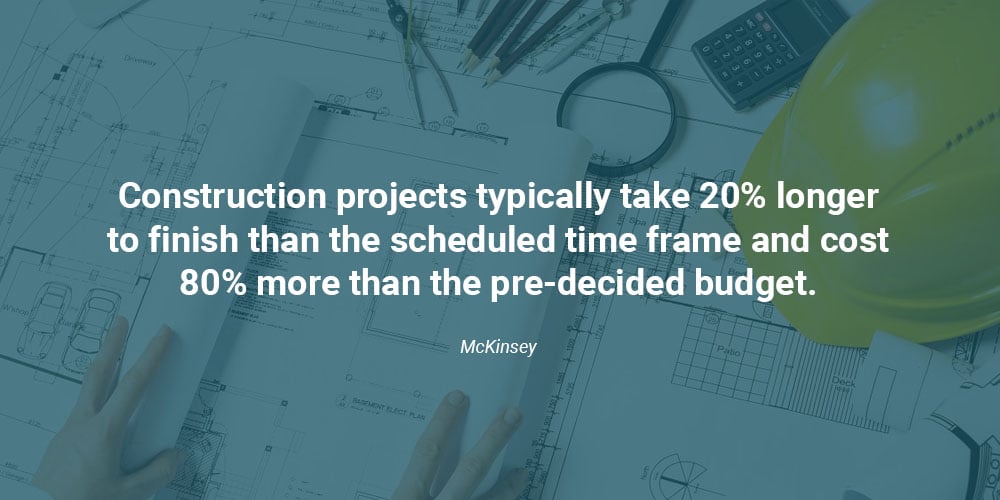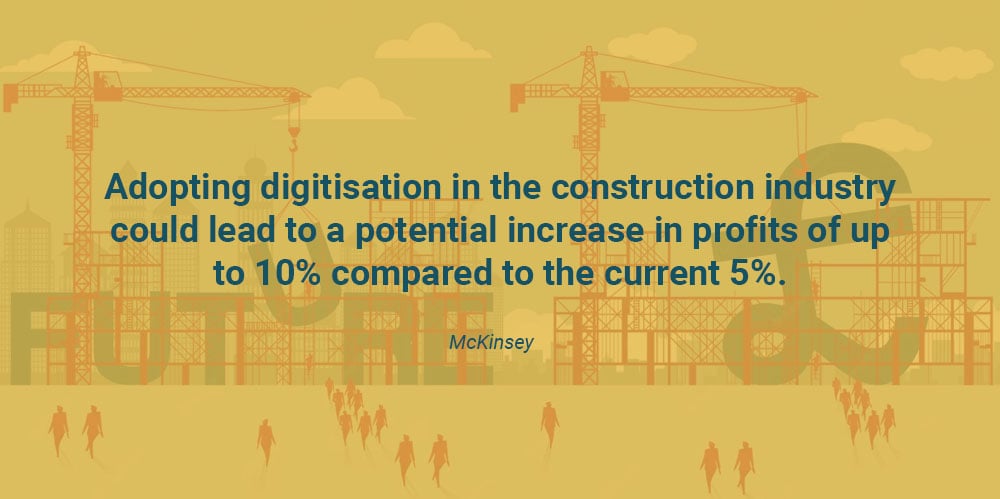From Beams to Bytes: How As-Built Point Cloud Reshapes Construction Verification
When it comes to construction, “close enough” just doesn’t cut it anymore. Owners expect consistent schedules, contractors want zero rework, and VDC...
3 min read
![]() Brighter Graphics
:
Jul 6, 2023 1:52:23 PM
Brighter Graphics
:
Jul 6, 2023 1:52:23 PM

Digital technologies are reshaping traditional workflows by optimising and streamlining repetitive processes in the AEC industry. But still, some AEC firms are hesitant to digitise their AEC workflows fully and prefer manual workflows and established methodologies.
The outlook for the construction industry's future demands AEC firms to harness technology's true potential by digitising all areas of construction, architecture, and engineering workflows. The industry can no longer sustain itself by embracing bare minimum digital transformation. The significant factors likely to impact the future of the construction industry include climate change, scarcity of construction materials, demographic changes, and more. For now, the key players in the construction sector are posturing strategically to stay relevant.
Digitising construction can help construction companies to address the growing challenges of rapid urbanisation, supply-chain deadlocks, labour shortages, and productivity. According to Deloitte 2023 Engineering & Construction Industry Outlook, around 50% of AEC firms are gearing up to invest in digital technologies to boost productivity. The most significant aspect of adapting modern digital technologies is to keep all stakeholders informed and connected throughout the project lifecycle with actionable insights and data.
This blog post will help you explore how digitising construction can help the industry leverage the endless privileges of the leading digital technologies. Let’s dive deep into detail.
The AEC industry has evolved significantly over the last decade. Digital tools have fuelled the transformation of outdated AEC processes, leading to improved collaboration, productivity, accuracy, and cost-effectiveness. Below are some of the perks AEC companies can expect from digital transformation.
In the traditional and opaque AEC workflows, there often needs to be more communication and coordination among various AEC teams. This lack of collaboration leads to project delays, cost overruns, supply-chain bottlenecks, unsatisfied clients, and poor productivity & efficiency.
McKinsey survey found that construction projects typically take 20% longer to finish than the scheduled time frame and cost 80% more than the pre-decided budget, resulting in frequent lawsuits.
An industry-leading PDF collaboration tool like Bluebeam Revu helps AEC experts to collaborate and communicate more efficiently. Bluebeam allows real-time collaboration and enables remote teams to work in close collaboration with each other, share feedback, quickly take urgent actions, and access project data from anywhere and anytime. The seamless collaboration among different AEC teams at each stage of the project lifecycle leads to faster and more informed decision-making, reduced human errors, and dodging potential roadblocks down the line.
With Bluebeam Revu, AEC professionals can streamline these repetitive and mundane processes, reducing the time to market while improving efficiency and productivity. Document collaboration tools like Bluebeam offer automation tools that allow users to process the batch of files, compare revisions, implement scripting commands, save & reuse frequently used tools, add formulas for customise calculations, etc.
Accuracy and consistency are the key determinants of the AEC project’s success. Digitisation can enable AEC professionals to ensure the utmost accuracy and consistency throughout the design and construction processes. Using markup measurement tools in Bluebeam Revu allows AEC teams to use them.
All these features and use cases of PDF collaboration and management ensure that all elements and materials are accurately estimated, sized, and positioned to reduce errors and inconsistencies.
Reducing errors by adapting digital workflows is crucial for the future of the construction industry and gaining cutting edge in the dynamic global markets. In traditional AEC processes, document management is another mundane & time-consuming task. Additionally, mistakes in document management can lead to costly errors and rework. Digital document management enables AEC professionals to streamline document management tasks, track changes & updates, monitor progress, and reduce errors. Reusing and repurposing the same document for multiple edits, markups, callouts, comments, or suggestions reduces paper usage to ensure an environment-friendly approach. Digital document collaboration also allows key stakeholders to share access to the latest project document versions, eliminating any chances of data redundancy.

According to McKinsey, adopting digitisation in the construction industry could lead to a potential increase in profits of up to 10% compared to the current 5%. Below are some proven techniques and best practices for the future of the construction businesses to successfully implement digitisation:
Are you ready to unlock the full potential of digitising construction? In a world where sustainability, efficiency, and productivity reign supreme, the path to success awaits early adopters. Embracing digital technologies is not just an option; it's necessary for those seeking a brighter and thriving future in the construction sector.
That's where comes in Brighter Graphics – a leading reseller of Bluebeam Revu and Bluebeam Sapphire Partner. We're committed to empowering you with the knowledge and skills to transform your AEC processes, elevating your AEC workflows to unprecedented heights of productivity and profitability.
The future of the construction industry is here. Explore Brighter Graphics today to learn more about Bluebeam Revu, explore our resource library, and unlock the limitless possibilities that await you. Take action now and join the voyage on a transformative journey towards digitising construction.
When it comes to construction, “close enough” just doesn’t cut it anymore. Owners expect consistent schedules, contractors want zero rework, and VDC...
If you’re an AECO professional who’s excited by AI workflows, natural language capabilities, and maximum automation in your projects, something big...
The gap between design accuracy and on-site execution can determine whether a construction project succeeds or fails. Even with advanced digital...